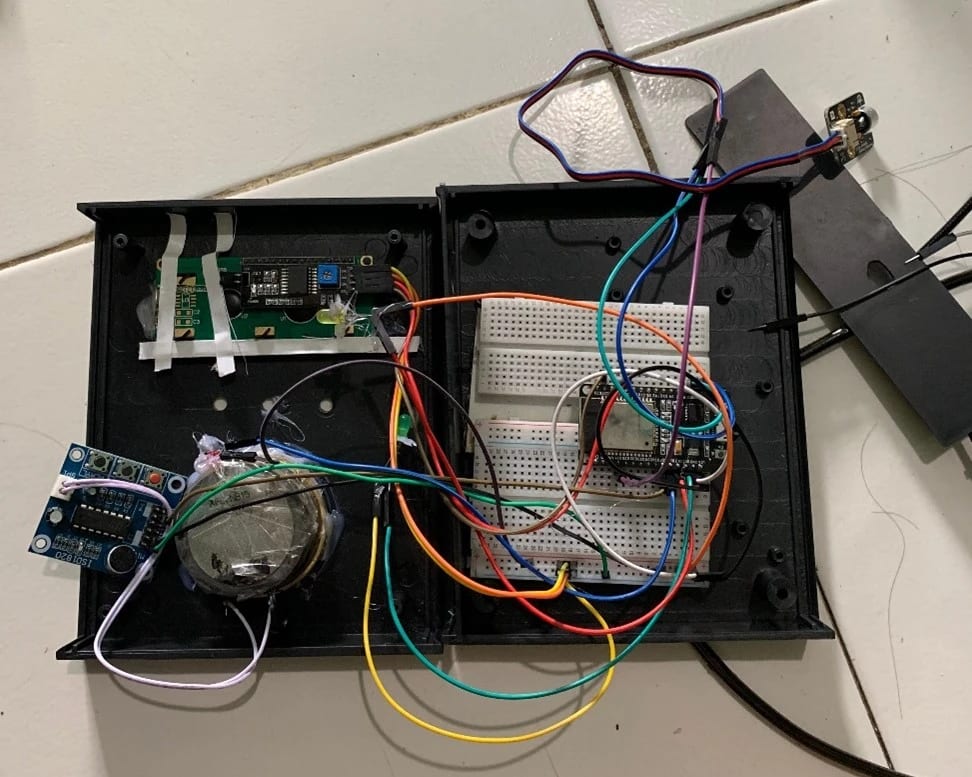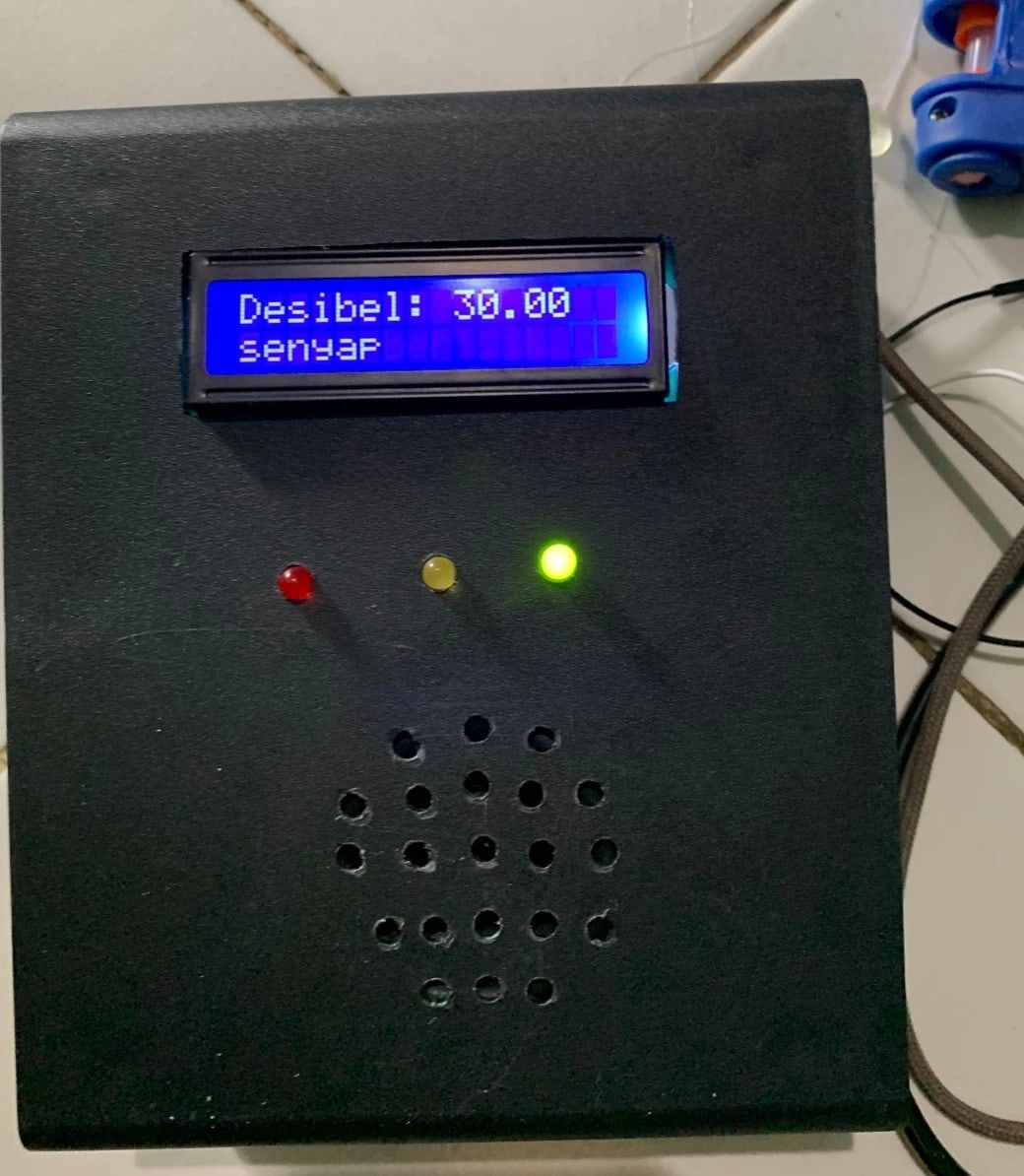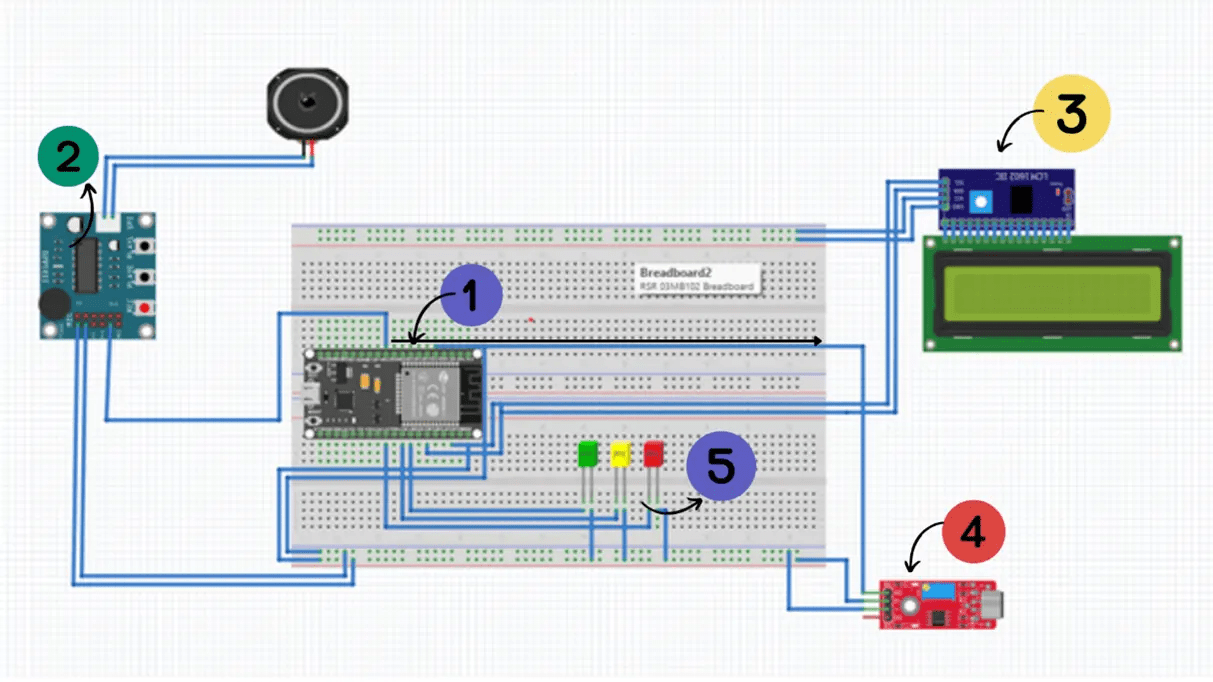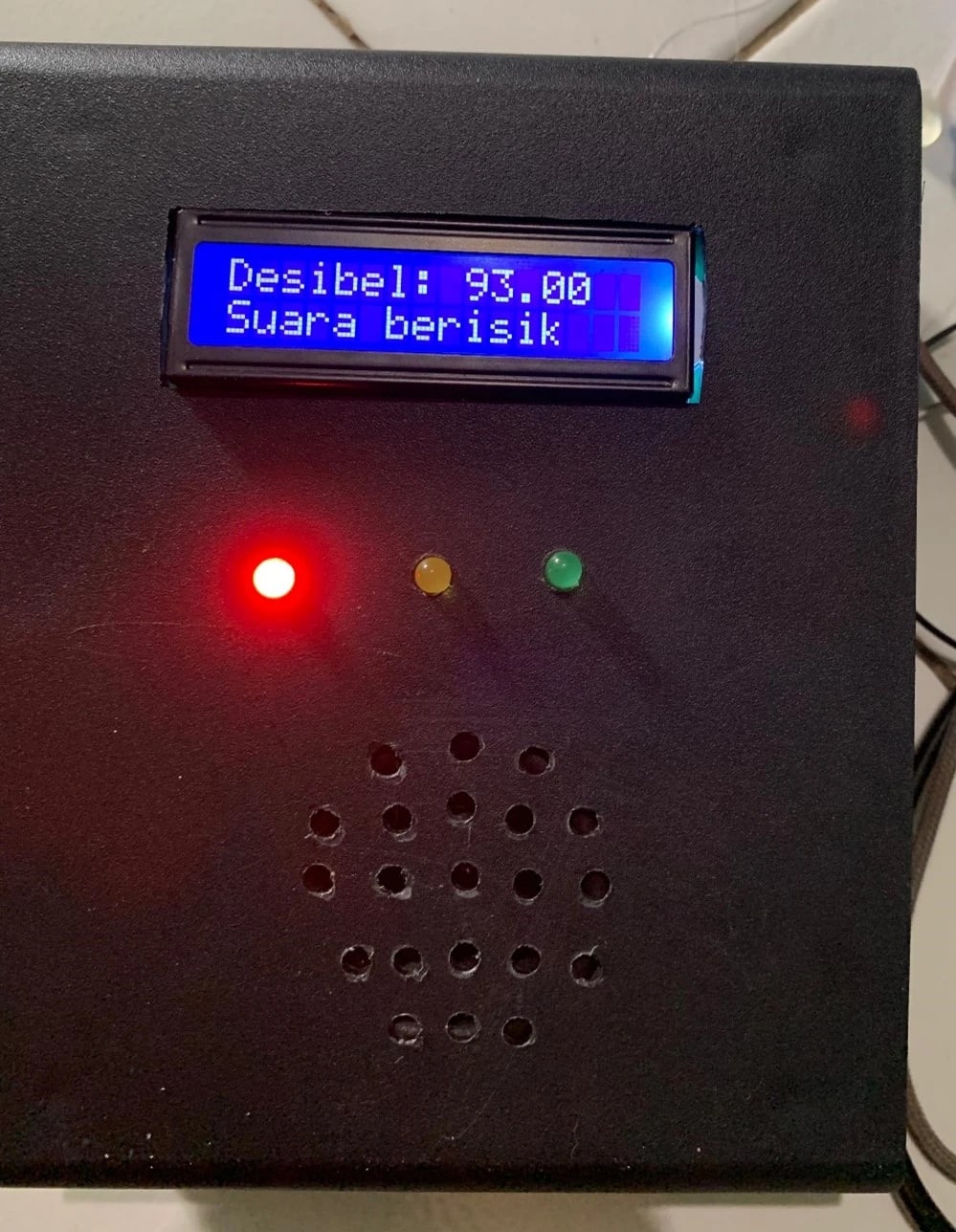Design of an Automated Noise Detection System for Library Visitors Based on ESP32 Microcontroller
This system is designed to monitor noise levels in libraries and alert users when noise exceeds acceptable thresholds. It integrates noise sensors with an ESP32 microcontroller to detect and analyze sound in real-time. Notifications can be sent through apps like Blynk, and real-time data is accessible via a Wi-Fi network.
In Development

PROJECT OBJECTIVES
- Monitor noise levels in libraries to ensure a quiet environment for visitors.
- Send instant notifications to library staff when noise exceeds a certain threshold.
- Enable real-time monitoring of noise levels using Wi-Fi connectivity and IoT apps.
- Integrate alert systems to notify staff and visitors about high noise levels.
- Provide visual and auditory alerts when noise thresholds are exceeded.


DESIGN PROCESS
- Problem Discovery: Identifying the need for controlling noise levels in libraries to create a conducive reading environment.
- Research and Problem Understanding: Researching common noise-related issues in libraries and exploring existing solutions for monitoring noise levels.
- Wireframe and Prototype Development: Creating initial designs for the noise detection system, including sensor integration and notification workflows.
- High-fidelity Design Iteration: Refining the design for hardware and software components to ensure accuracy and usability.
- Review and Further Iteration: Working with the technical team to review and finalize the system’s design for real-time noise detection.
- Hardware Development: Building the hardware with ESP32 microcontroller, noise sensors, and notification components.
- Testing and QA: Performing tests to ensure accurate noise detection and reliable notifications in different library conditions.
CHALLENGES
- Balancing between sensitivity and accuracy in detecting different noise levels while avoiding false alarms.
- Ensuring the system performs well in large spaces and under different environmental conditions.






LESSONS LEARNED
- Gaining a deeper understanding of how to manage noise in public spaces using IoT technology.
- Learning to fine-tune sensor sensitivity for optimal performance in varying conditions.
- Improving skills in designing systems focused on public comfort and noise control.